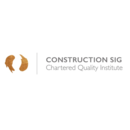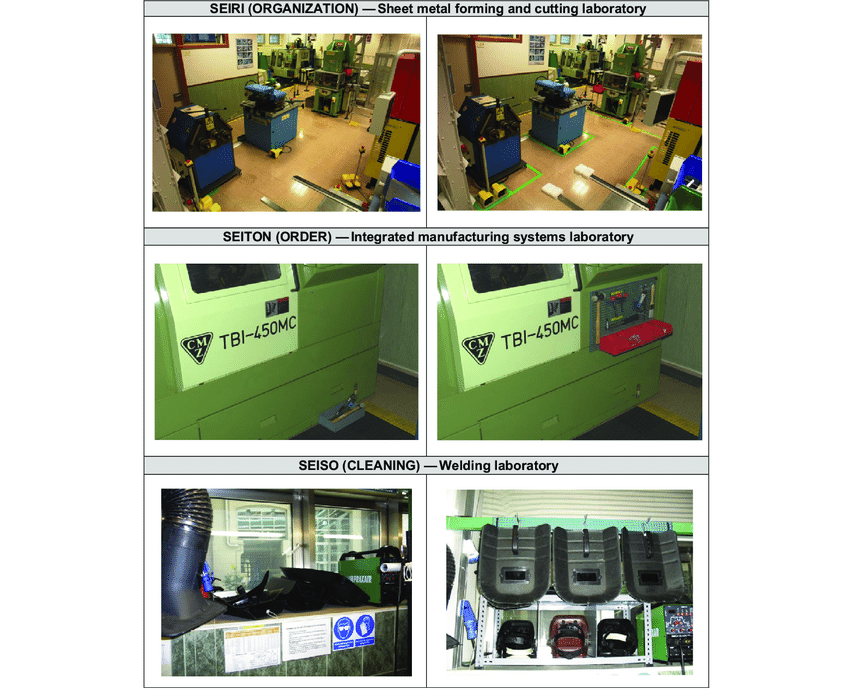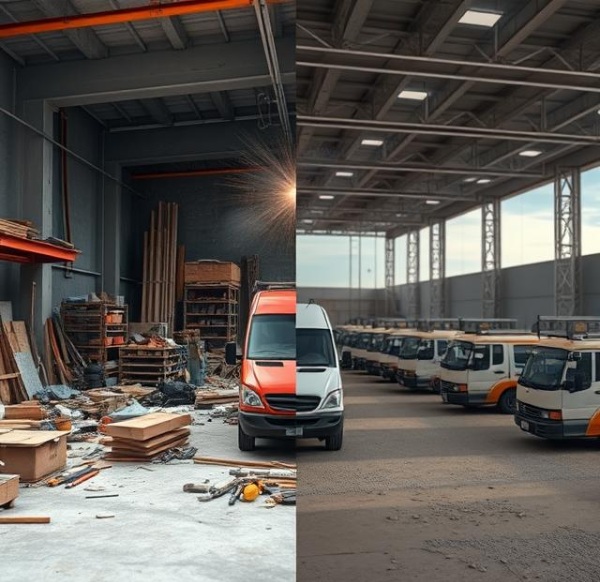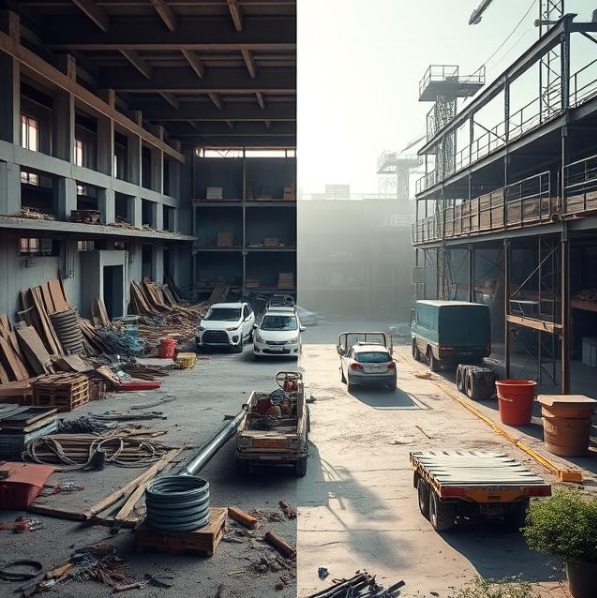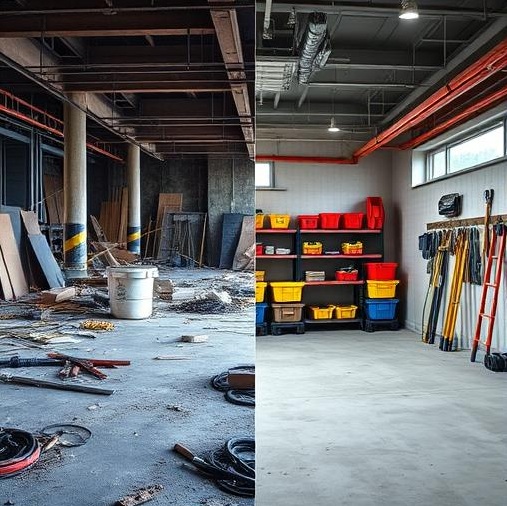A guide to the 5S Methodology
Contents |
[edit] A guide to the 5S Methodology
Those who work with tools know how important is to maintain a certain order to be able to preserve each element in the best possible conditions; find it when needed so saving time and maintain efficiency; allow others to use it.
Those who sit at a desk may be aware of the “clean desk policy” that, in recent years, has become a standard in many organisations. Employees are requested to leave their desk in order, avoiding documents spread on the working space, piles of unbalanced folders, pens and pencils everywhere.
The basic idea is that clutter causes inefficiencies due, as an example, to the confusion generated by the disorganised distribution of the items on the space.
“Order”, “preserve”, “saving time”, “efficiency”, “clean”, “inefficiencies”. “confusion”, “disorganised”: all terms that are somehow connected to the 5S methodology.
Developed in Japan by Hiroyuki Hirano, a Toyota engineer, 5S is one of the fundamental elements of Lean Manufacturing and, of course, Lean Six Sigma. The name comes from the initials of five Japanese words: Seiri, Seiton, Seiso, Seiketsu, Shitsuke. If you are unfamiliar with the language, no worries; the English version has chosen five terms starting with “s” as well: Sort, Set in Order, Shine Standardise, Sustain.
5S offers a simple yet powerful solution and, when implemented effectively, it creates a clean, efficient, and safe work environment, boosting productivity and fostering a culture of continuous improvement.
[edit] The 5S Pillars
Hirano identified 5 elements of the 5S approach:
- Sort (Seiri): The first step is to declutter. Identify essential and non-essential items. Discard anything that's broken, unused, or outdated. Label unclear items for further evaluation and designate a holding area for items slated for removal.
Set in Order (Seiton): Organise the remaining items for easy access and retrieval. Clearly label shelves, drawers, and equipment. Use visual cues like color-coding or floor markings to designate specific locations. “Set in order” is more common in the manufacturing environment. In other industries this point is also referred to as “simplify”: everything that complicates the work environment can contribute to create waste of time, waste of space, inefficient use of resources, et al.
Shine (Seiso): Maintain a clean and hygienic workspace. Establish cleaning routines and assign responsibilities. Regular cleaning fosters a sense of ownership – supporting the achievement of better results - and prevents dirt and debris from accumulating.
Standardise (Seiketsu): Everyone needs to know why something has been done in a certain way. Develop and document best practices for maintaining the organised state achieved in the previous steps. Create visual aids like checklists and flowcharts to ensure consistency.
Sustain (Shitsuke): The final pillar emphasises continuous improvement. The word used by Hirano is “discipline”. Integrate 5S into daily routines and conduct regular audits to identify areas for improvement. Encourage teamwork and hold employees accountable for upholding the established standards.
As continuous improvement requires, critical to the success is the participation of the management and keeping the interest alive on the methodology.
[edit] Benefits of 5S
- No drama: compared to other tools, 5S is easy to understand and can be implemented easily.
- Increased Productivity: less defects make reliable deliveries.
- Enhanced Safety: a clean and organised workspace minimises tripping hazards and promotes better awareness of surroundings.
- Better maintenance: equipment conditions should be evaluated periodically, improving the availability ratio (tools are available when needed).
- Reduced lead times: reduced clutter and improved organisation save time and effort, otherwise spent searching for tools and materials.
- Improved Quality: standardised processes and clear labelling lead to fewer errors and higher quality output.
- Boosted Morale: a clean and organised work environment fosters a sense of pride and ownership among employees.
- Reduced Waste: 5S promotes a culture of efficiency and reduces waste, by eliminating unnecessary items.
- Continuous Improvement: using 5S offers the opportunity to explore new ways of organising the resources, eventually leading to a virtuous circle.
[edit] Getting Started with 5S
Implementing 5S doesn't require a significant investment and does not need expensive experts to guide you through. Start by gathering your team and clearly defining goals. A scalable approach is advisable: begin with a small, manageable area and work your way to apply the 5S stages throughout your company. Celebrate successes of your team and continuously refine your approach.
The 5S methodology offers a practical and effective framework for creating a well-organised and productive work environment. By adopting these principles, you can empower your team to work smarter, not harder.
[edit] Beyond the Workplace
Like other tools – e.g. 5Whys - 5S was born and is primarily used in manufacturing and industrial settings. However, its principles can be applied to any work environment, including construction sites, and even to the personal life. By decluttering your physical and digital space, you can free up mental space and enhance overall well-being.
[edit] Final considerations
The interesting part of the 5S methodology is that you might already be using it. Keeping your stuff in order has always been a wise behaviour. 5S methodology makes wiseness a step-by-step approach.
The pillars are as easy to remember and to be used as they are powerful. Their application may require specific knowledge of the work processes, but the majority of the situations in the construction industry can be improved in a straightforward way without involving expensive consultants or highly trained employees.
Eventually, the implementation may be enhanced by allowing everyone to contribute. As an example, a competition may be organised between teams managing similar activities: each team might offer innovative ways to address 5S expectations.
All that is required is to start; improvements will come as a natural effect.
[edit] Examples of the 5S methodology
Figure 1 – Comparison between before and after 5S methodology application (Researchgate)
Figure 2 - Before and after 5S (Sempai)
Figure 3 - Before and after 5S (Sempai)
The following images are generated via artificial intelligence and show the work environment before and after the implementation of the 5S methodology.
Figure 4 – AI generated example
Figure 5 – AI generated example
Figure 6 – AI generated example
Figure 7 – AI generated example
[edit] Reference
Hirano, H (1995). 5 pillars of the visual workplace – the sourcebook for 5S implementation. Productivity Press, New York. ISBN: 1-56327-047-1
5 Pillars of the Visual Workplace - Hiroyuki Hirano - Google Books
Researchgate – Figure 1 “Comparison between before and after 5S methodology application “ Uploaded by Mariano Jiménez Calzado https://www.researchgate.net/figure/Comparison-between-before-and-after-5S-methodology-application_fig5_276267985
Sempai.co.uk. Figure 2 & 3 “Before and after 5S”. www.sempai.co.uk
Original article written by Giorgio Mannelli & reviewed by Graham Taylor and Alistair Connon on behalf of the Construction Special Interest Group (ConSIG) Thought Leadership Group (TLG former KWG). Article peer reviewed by the TLG and accepted for publication by the ConSIG Steering Committee. The information in this article was accurate at the time of the review.
[edit] Related articles on Designing Buildings
- 5 Whys
- Annex SL
- Assurance and self-certification
- Auditing management systems
- Building information modelling.
- CDM Regulations: a quality perspective
- Change control: a quality perspective
- Collaboration: a quality management perspective
- Cost of quality.
- Design freeze: a quality perspective
- Design: a quality management perspective
- Digital information.
- Digital quality management in construction
- Failure modes and effect analysis (FMEA).
- Feng shui.
- Golden Thread report published by CIOB and i3PT.
- Lifts and Escalators: A Quality Perspective
- Mobilisation to site: a quality perspective
- Quality assurance.
- Quality culture and behaviours
- Quality management.
- Quality management systems (QMS) - beyond the documentation.
- Quality manuals and quality plans
- Quality tools: fishbone diagram
- Stakeholder management: a quality perspective
- Structural steelwork: a quality perspective
Featured articles and news
RTPI leader to become new CIOB Chief Executive Officer
Dr Victoria Hills MRTPI, FICE to take over after Caroline Gumble’s departure.
Social and affordable housing, a long term plan for delivery
The “Delivering a Decade of Renewal for Social and Affordable Housing” strategy sets out future path.
A change to adoptive architecture
Effects of global weather warming on architectural detailing, material choice and human interaction.
The proposed publicly owned and backed subsidiary of Homes England, to facilitate new homes.
How big is the problem and what can we do to mitigate the effects?
Overheating guidance and tools for building designers
A number of cool guides to help with the heat.
The UK's Modern Industrial Strategy: A 10 year plan
Previous consultation criticism, current key elements and general support with some persisting reservations.
Building Safety Regulator reforms
New roles, new staff and a new fast track service pave the way for a single construction regulator.
Architectural Technologist CPDs and Communications
CIAT CPD… and how you can do it!
Cooling centres and cool spaces
Managing extreme heat in cities by directing the public to places for heat stress relief and water sources.
Winter gardens: A brief history and warm variations
Extending the season with glass in different forms and terms.
Restoring Great Yarmouth's Winter Gardens
Transforming one of the least sustainable constructions imaginable.
Construction Skills Mission Board launch sector drive
Newly formed government and industry collaboration set strategy for recruiting an additional 100,000 construction workers a year.
New Architects Code comes into effect in September 2025
ARB Architects Code of Conduct and Practice available with ongoing consultation regarding guidance.
Welsh Skills Body (Medr) launches ambitious plan
The new skills body brings together funding and regulation of tertiary education and research for the devolved nation.
Paul Gandy FCIOB announced as next CIOB President
Former Tilbury Douglas CEO takes helm.
UK Infrastructure: A 10 Year Strategy. In brief with reactions
With the National Infrastructure and Service Transformation Authority (NISTA).






